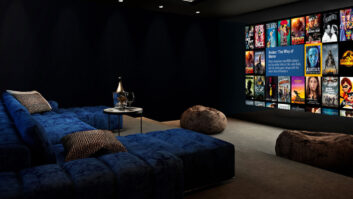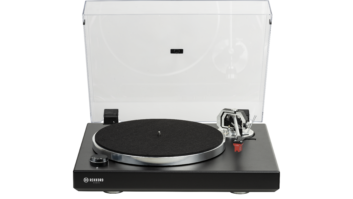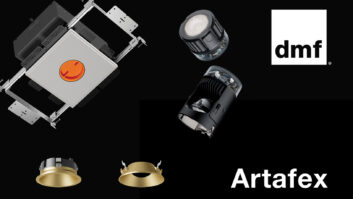All over North America, new population groups are rediscovering city centers as hospitable living environments. With high gas prices making daily commutes a costly prospect, and the character of suburban environments disappearing behind a facade of look-alike mini malls and parking lots, there is renewed growth in urban residential development.
It is happening from Vancouver to Richmond, and in Columbus and Minneapolis in between, and it is not just for young urban professionals anymore. A growing number of baby boomers are also relocating to downtown locales once their children have left the nestand theyre opting for new mixed-use buildings and loft properties that place them in close proximity to theaters, restaurants, and specialized retailers.
The types of buyers who prefer city living are often fairly tech-savvy, or at the very least, are interested in some of the amenities provided by technologythe electronic peephole provided by a lobby security camera that has been integrated with the television set in the living room, for instance.
There are other factors inherent in these types of residences that all but necessitate the implementation of entertainment and control technology. This is a tempting proposition for residential systems dealers, and one that by volume alone seems to promise a thrilling increase in profits. What many are learning the hard way is that a large number of installations also means added difficulties in managing cash flow, customization, product delivery, installation and then the unyielding burden of tech support, a service which developers view as ongoing and without limit when it comes to keeping tenants happy or clinching the sale of a condo.
Simply put, these are residential projects conducted on a commercial scale, with elements of both types of businesses influencing the success rates of those firms who make the leap into MDU work. Just as developers are discovering that mixed-use properties offer an appealing combination of entertainment and comfort, integrators are finding out that to be comfortable providing entertainment systems they had better create a hybrid business model of their own.
To be successful in delivering solutions for the MDU market, integrators need to be accomplished in both the residential and commercial spaces, emphasized Richard Millson, president of Millson Multimedia in Vancouver, British Columbia.
Millsons first foray into the MDU market was a 500-unit project that the company completed in 1995. We had a decade of experience with commercial projects at that point, and that proved to be invaluable in working in that environment, Millson recalled. Even so, we had to develop a wide variety of methods and procedures to deal with the incredible pace of construction on that project and the many towers we have completed since then.
Millson pointed out that high-rise residential tower construction relies on concrete rather than wood framing, which speeds up the process significantly. Typically a new floor is poured every five to eight days. Integrators used to even the largest residential projects are not normally accustomed to this pace, Millson said, and will find they need to develop the right kinds of tools to cope with the increased pressures of a faster construction schedule.
To this end, Millson Multimedia has developed its own custom software solution and several proprietary hardware products based on the efficient workflows that these projects require, allowing the company to manage multiple towers at various stages of the sales, construction, and installation cycle at the same time.
Still there remains the question of dealing with immense numbers of purchasers simultaneouslya process which intensifies in enormity when a building nears occupancy. Even with the extra leeway that this large-scale construction provides through their extended planning and development cycles, there is work that can be done from the moment a residential unit is sold. A rack can be built, burned in and tested long before it rolls onto a construction site, and if managed properly, the rough-in phase of construction can be intensely efficient. Partnering with electricians and other labor to ensure that wiring, rough-in brackets for speakers, and wall-mounts for video displays are all ready for action when the close-out phase begins is a step in the right direction.
We let all the electricians do as much as physically possible of the installation to the level which theyre capable, explained Steve Babel, owner of Concierge Direct in Mamaroneck, New York. Babel has found that partnering with electrical contractors (especially in New York City) is the way to go, and his company has it down to a science in terms of selecting the crme de la crme to put the finishing touches on a project. There are a handful of electricians which we call the White Glove Crew. They have the ability to hang TVs and mount speakers and trim out all the AV gear under our supervision. So the bottom line is, we utilize their manpower and we project manage heavily. Its like managing a herd of wild horses, but you only need two or three cowboys to handle the herd. We have the massive power to do it, we just have to harness it and direct and handle it.
When working on projects of this scale, partnering seems to be the way to go. Progressive Audio in Columbus, Ohio, has created an alliance with a local access control company, and hence can present itself as a hybrid residential and commercial installera combination which MDU developers find appealing. It resolves all of the developers concerns about integrating commercial and residential in the same building technology-wise, noted Aaron Carmack, the integrators director of business development.
The partnerships dont stop there. Often developers will rely on integrators to clarify and implement the technology piece of the sales equation. Even cable and satellite companies are starting to figure out that the AV integrator is the person who can help them gain foothold on an MDU project. We help in that decision-making process for the developer, because theyre getting bombarded by all of the content providers, Carmack said. A lot of developers are as inexperienced at MDUs as those of us in this industry are, and theyre really looking to us for solutions because they know they have to put technology in, but they dont have any experience doing it.
It seems that there are an infinite number of combinations that will enable companies to tackle the MDU market. Its a matter of adding the talent and experience required to handle what is essentially an extremely large-scale project with personalized touches on the most minute level.
Scale is one aspect, but executing these projects involves successfully dealing with a myriad of homeowners who often are high-net-worth individuals and who want systems that are simple to use because theyre typically not there all the time, noted Scott Norder, executive vice president of business development for AMX. Next its a matter of installing those systems in coordination with an overall construction process on a timetable that entails a number of jobs that most residential dealers dont even do in three to five years.
There are several common business models that seem to have evolved at this point in the MDU life cycle. First there is the large residential installer that subcontracts out the wiring and network aspects of an installation. Then there is the commercial installation company that has acquired residential talent, often by acquiring another company. And then there is the hybrid company, which lies somewhere between these two modelsthe residential dealer dealing with a commercial player of either an AV variety or a high-tech infrastructure provider that handles the networking infrastructure in a building.
The MDU market appears to be as multifarious as its actual physical structure seems to imply. Comprised of many independent units, there is one unified goal, and that is to make a profit while satisfying a vast number of clients. Today, this opportunity exists not just in major metropolitan areas where high-rise apartment buildings are commonplace, but also in other locales that are either seeing urban renewal or even in suburban developments that are attracting buyers with integrated technology.
Before embarking on any of these types of projects, it is important for any company to be aware of the way its resources would be tested when working on this scale. That will help to clarify which type of MDU development might be worth investigating as a growth opportunity. Highly condensed groupings of luxury residences dont have to be vertical; they can just as easily be horizontal, Millson observed. These types of developments, gated communities and the like, do offer some opportunities for integrators, but the problem we have found is that often these types of projects have numerous builders, not a single developer, and each of these builders end up building a smaller number of homes. This arrangement doesnt allow our model to work, but I think it could work for smaller integrators looking to make a first attempt at this type of work, and not be saddled with too much responsibility for a massive project on their first attempt.
Kirsten Nelson is editor-at-large for Systems Contractor News.







